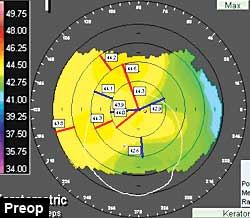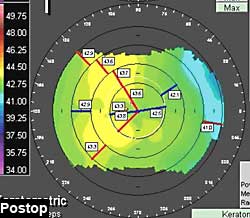Initiative promotes mass cataract extraction in China
Sutureless, large-incision manual technique is suitable for use in rural areas because it is safe and affordable with good visual outcome, procedure’s co-developer said.
Sutureless, large-incision manual cataract extraction surgery may help eradicate preventable blindness in China, according to a surgeon who is leading an effort to make the procedure widely available there.
 Dennis S.C. Lam |
OSN Europe/Asia-Pacific Edition Associate Editor Dennis S.C. Lam, MD, FRCOphth, presented the technique at the International Society of Refractive Surgery/American Academy of Ophthalmology Refractive and Cataract Surgery Symposium in Beijing.
“In China … compared to that of many places in the world, we are still lagging behind,” Prof. Lam said. He cited the unavailability of quality cataract surgery in rural areas of China and the high cost of the procedure in urban areas.
“The solution is what?” he asked. “It’s to improve the rate of good, quality, affordable cataract surgery. This should be performed close to where people live. So when we are able to do that, we are able to be much better off.”
Prof. Lam, assisted by Srinivas Rao, MD, FRCS, developed the sutureless, large-incision manual cataract extraction (SLIMCE) technique, which is appropriate for use in rural China because the large wound incision enables easy and safe nucleus delivery, and the lack of sutures reduces the cost of surgery and the risk of postoperative problems, he said.
Taking action
Project Vision, initiated by Prof. Lam, is designed to train eye doctors in hospitals at the county level to provide sustainable cataract surgery at an affordable cost. The project was supported by the Li Ka Shing Foundation, and the first surgical center opened in December 2004.
Good outcome from the SLIMCE procedure made rural patients willing to pay the equivalent of $90 U.S., which is “affordable, even to farmers,” Prof. Lam said.
Project Vision currently includes five centers and five independent surgeons who have performed more than 4,000 SLIMCE procedures.
The Project Vision Charitable Foundation, recently founded by Prof. Lam, has signed an agreement with the Ministry of Health of China to raise $14 million to establish 100 charity eye units in poverty-stricken areas of China in the next 5 years. Over time, each unit will be further developed to provide quality and affordable comprehensive services that offer treatments for glaucoma, diabetic-related vision loss and other ocular disorders in addition to SLIMCE procedure, Prof. Lam said.
“SLIMCE is both safe and effective,” he said. “Large-scale, quality cataract surgery is possible. This is a workable model in China and maybe the world.”
|
Images: Lam DSC |
Surgical methods and outcomes
Phaco is the gold standard of cataract removal in developed nations, Prof. Lam said. “However, because of the cost and amount of training, it might not be the choice to eradicate mass blindness.”
Conventional small-incision techniques, although self-sealing, may be skill-dependent and risky to the endothelium, he said.
However, SLIMCE offers easy nucleus removal through a self-sealing, 8-mm incision with a long tunnel (2 mm in the sclera and 2 mm in the cornea), he said. The surgeon may either tumble the nucleus, as in phaco, or “dial” it out of the capsular bag before it is expressed out of the eyeball.
The surgeon should avoid the nucleus touching the endothelium. Sufficient hydrostatic pressure provided by infusion from an anterior chamber maintainer pushes the nucleus out of the tunnel, away from the endothelium, Prof. Lam said. Capsular IOL implantation was achieved in more than 95% of cases, he added.
A study of 50 consecutive cases by Prof. Lam showed that visual outcomes were good, with 100% of cases having visual acuity of 20/60 or better. The procedure reduced endothelial cell counts by less than 4%. Also, astigmatic changes were minimal and compared favorably with the phacoemulsification incision, he said.
“For these procedures, the outcomes have been encouraging.”
For more information:
- Dennis S.C. Lam, MD, FRCOphth, can be reached at Hong Kong Eye Hospital, The Chinese University of Hong Kong, 3/F, 14K Argyle Street, Kowloon, Hong Kong, SAR, China; +011-852-2762-3157; fax: +011-852-2715-9490; e-mail: dennislam8@cuhk.edu.hk. Prof. Lam has no financial interest in any of the products or companies mentioned in this article.
- Matt Hasson is an OSN Staff Writer who covers all aspects of ophthalmology. He focuses on regulatory, legislative and practice management topics.


